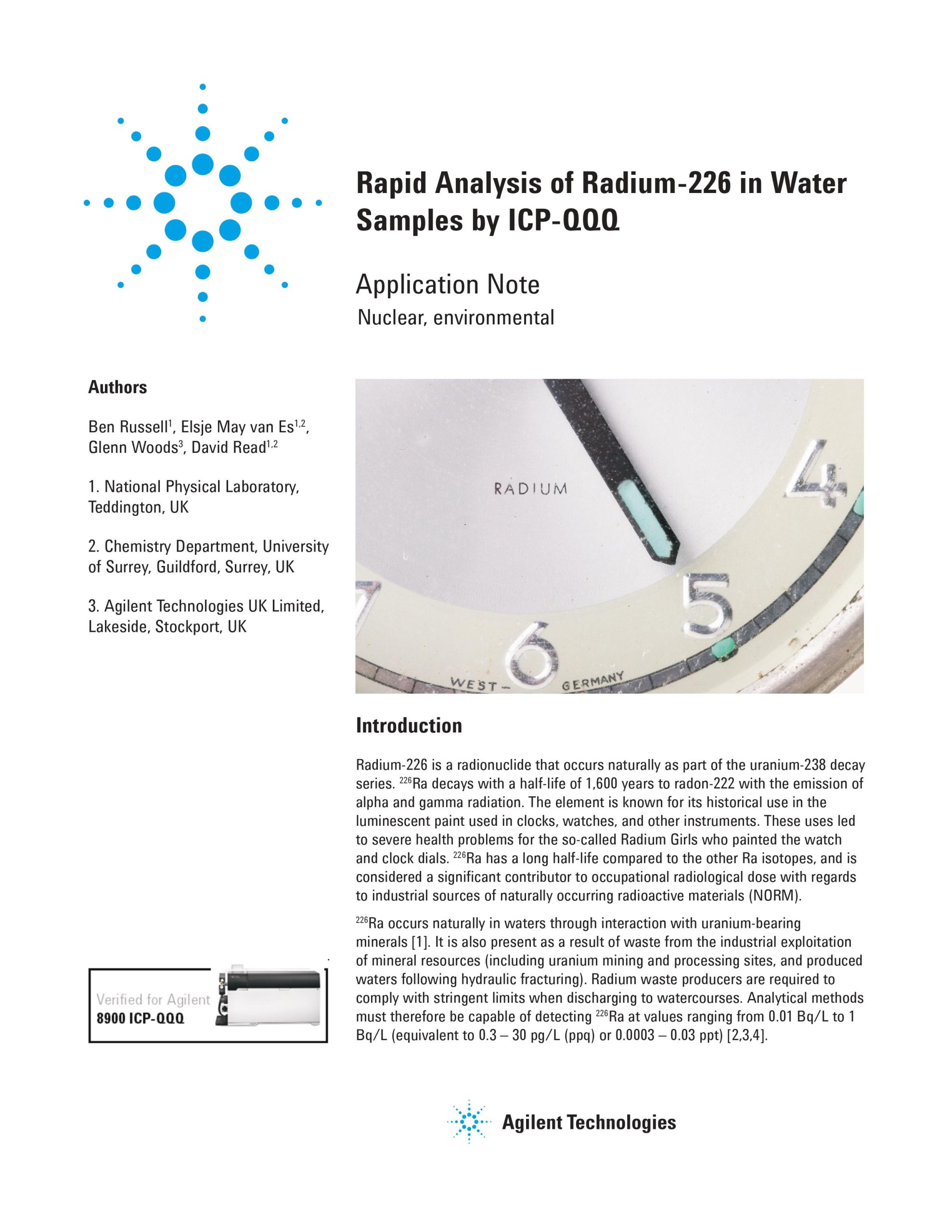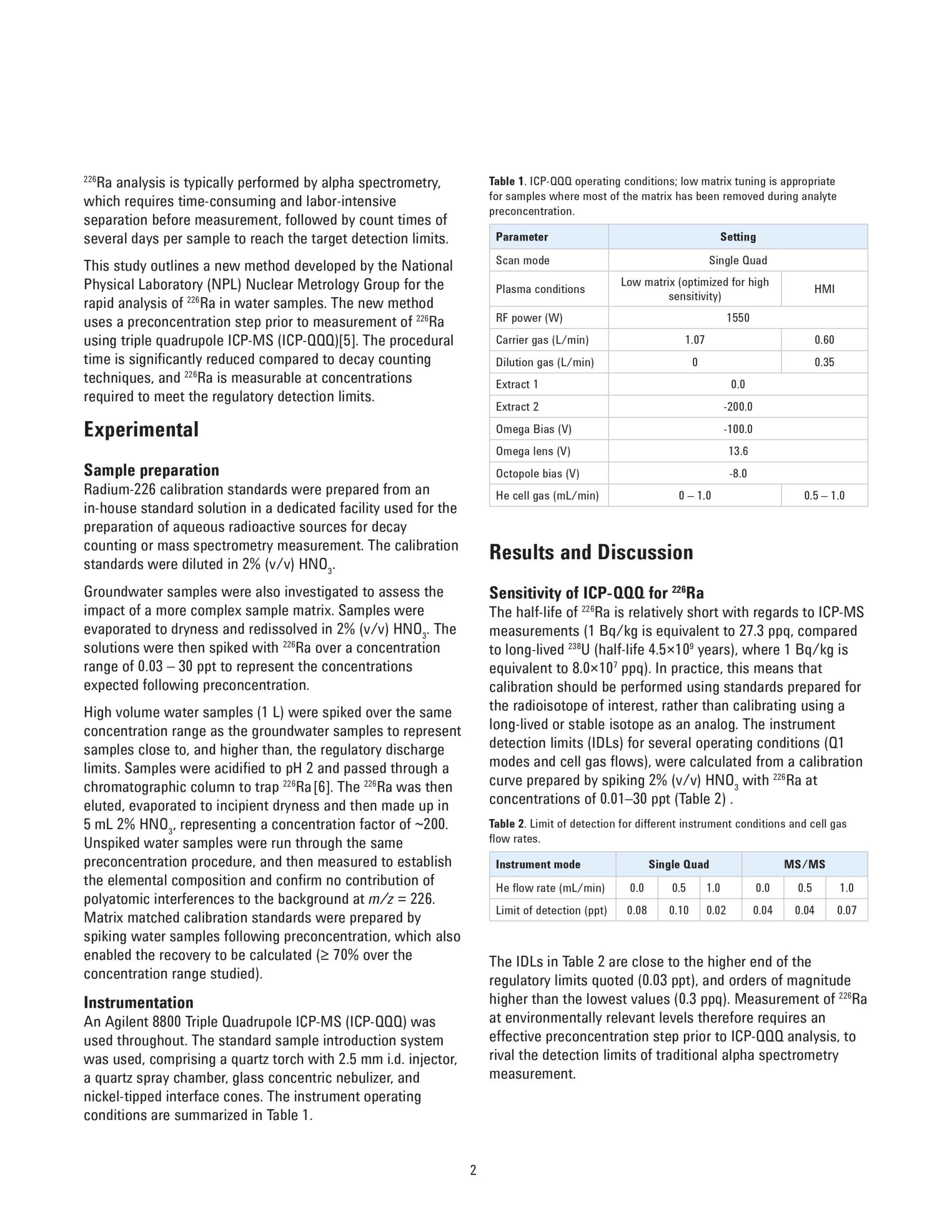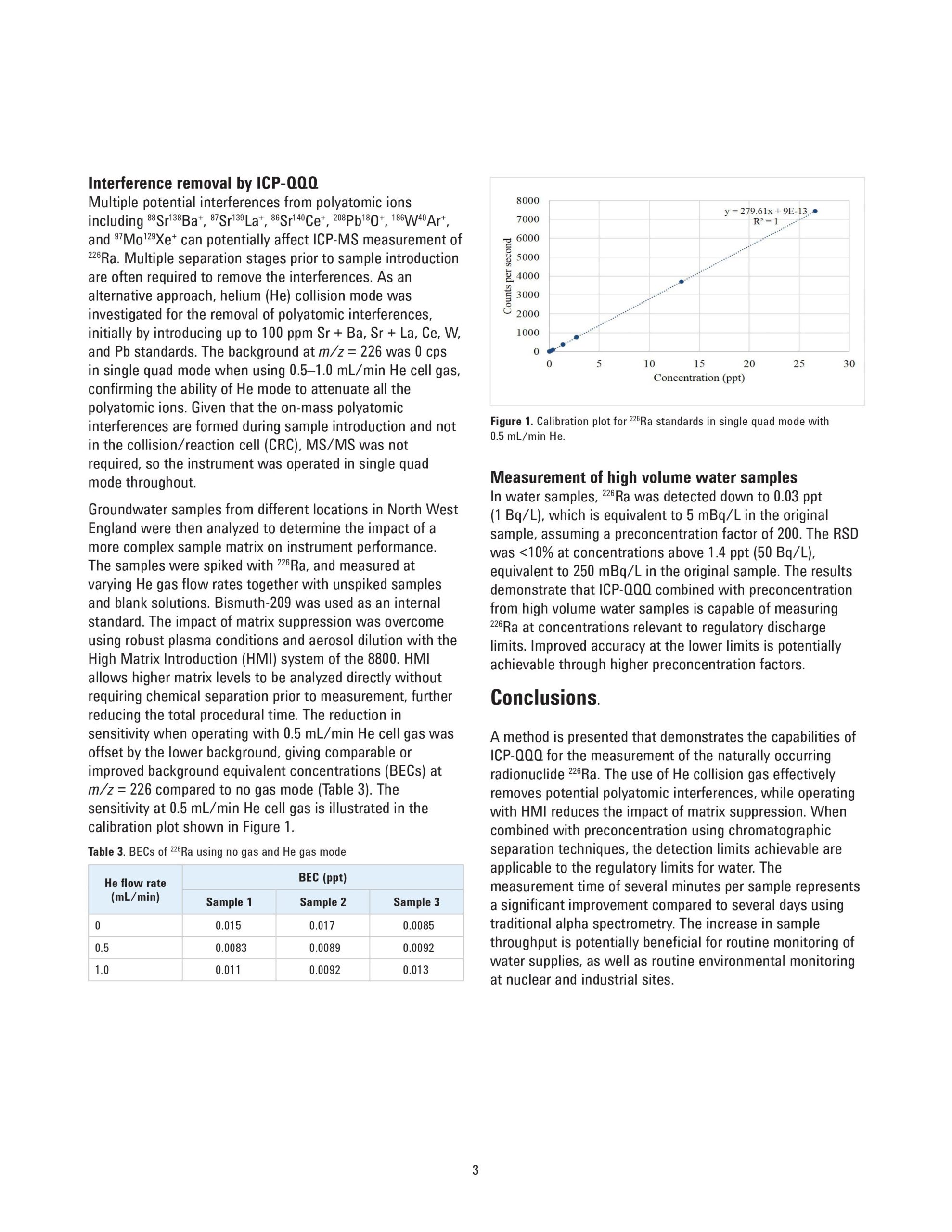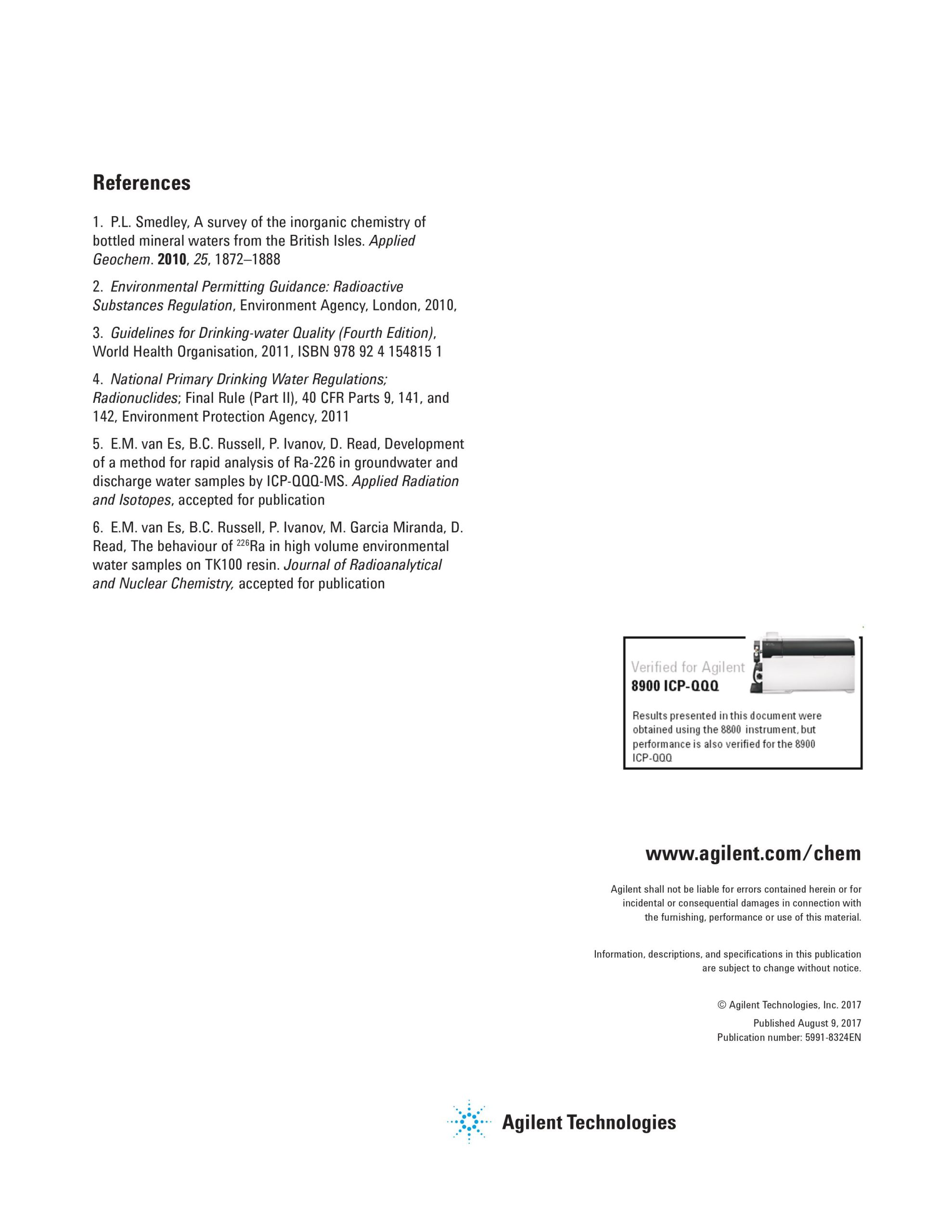Radium-226 is a radionuclide that occurs naturally as part of the uranium-238 decay series. 226Ra decays with a half-life of 1,600 years to radon-222 with the emission of alpha and gamma radiation. The element is known for its historical use in the luminescent paint used in clocks, watches, and other instruments. These uses led to severe health problems for the so-called Radium Girls who painted the watch and clock dials. 226Ra has a long half-life compared to the other Ra isotopes, and is considered a significant contributor to occupational radiological dose with regards to industrial sources of naturally occurring radioactive materials (NORM). 226Ra occurs naturally in waters through interaction with uranium-bearing minerals [1]. It is also present as a result of waste from the industrial exploitation of mineral resources (including uranium mining and processing sites, and produced waters following hydraulic fracturing). Radium waste producers are required to comply with stringent limits when discharging to watercourses. Analytical methods must therefore be capable of detecting 226Ra at values ranging from 0.01 Bq/L to 1 Bq/L (equivalent to 0.3 – 30 pg/L (ppq) or 0.0003 – 0.03 ppt) [2,3,4].






 Tiếng Việt
Tiếng Việt
